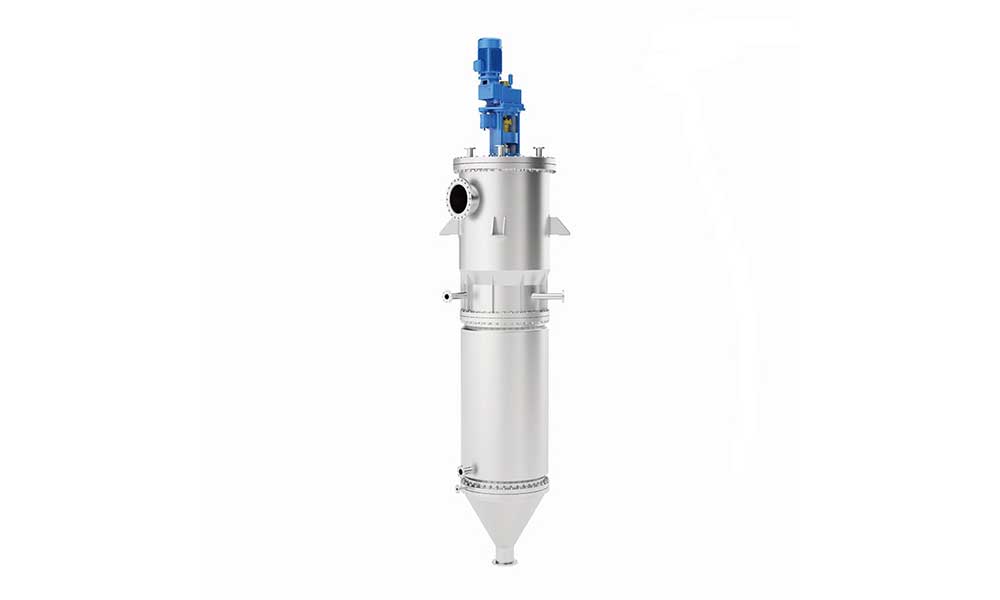Thin Film Pilot Plant
High-performance pilot equipment for chemical and industrial R&D

Overview
Pilot plants are essential in high-tonnage chemical industries, replicating industrial components—reactors, blenders, decanters, heat transfer boilers, heat exchangers, and columns—on a smaller scale.
At Atommek, we specialize in designing and manufacturing pilot plants for a wide range of raw materials, enabling clients to experiment with new processes or formulations. Pilot plants support the production of alkyd resin, P.V., Thin Film Evaporator, DOP, DOTP, polyester, and other systems, delivering tailored solutions for testing and optimization.
Key Benefits of Pilot Plants
- Conduct R&D experiments and optimize processes
- Evaluate cost and removal processes
- Handle reaction products efficiently
- Develop new product formulas and specifications
- Design specialized equipment for new processes
- Prepare operating manuals and guidelines
Pilot plants are flexible, innovative, and valuable tools that aid investment decisions, commercial process optimization, and rapid adaptation to small-volume, variable-product demands.
How It Works
The Thin Film Pilot Evaporator concentrates thermosensitive, viscous, or “dirtying” products (e.g., sugar solutions, enzymes, vitamins, proteins, fruit juices, fermentation broths).
Operation Process
- Solution is transferred from the storage tank to the evaporator via a metering pump.
- A cylindrical evaporator tube with a steam heating jacket and three-blade rotor spreads the liquid into a thin film on the walls.
- Vaporized solvent condenses in a shell-and-tube condenser and is collected in a tank.
- Automated models (mod. UFSa/EV) use a PID controller to regulate steam flow and vacuum automatically.
Technical Information (Project customization available)
Mod. UFS/EV Specifications
| Parameter | Specification |
|---|---|
| Model | UFS/EV, UFSa/EV (automated) |
| Framework | AISI 304 stainless steel with castors |
| Evaporator Tube | AISI 316 stainless steel, cylindrical with steam heating jacket |
| Rotor | Three-blade, variable speed, produces thin liquid film |
| Feeding Tank | Borosilicate glass, 5 L |
| Product Collection Tank | Borosilicate glass, 4 L |
| Solvent Collection Tank | Borosilicate glass, 4 L |
| Piping & Valves | AISI 304 & 316 stainless steel |
| Steam Trap | AISI 304 stainless steel |
| Vacuum Gauge | AISI 304 stainless steel, range -1 to 0 bar |
| Condenser | Shell-and-tube, AISI 304 stainless steel, 0.26 m² exchange surface |
| Graduated Tank | Borosilicate glass, 1 L (for condensate) |
| Temperature Measurement | 3 Pt100 thermoresistances + 3 electronic indicators |
| Vacuum Pump | Liquid-ring with air/water separator and solenoid on-off valve |
| Switchboard | IP55, EC compliant, with plant synoptic and ELCB |
| Emergency Stop | Included |
| Electricity | 400 Vac, 50 Hz, three-phase, 2.5 kVA (other voltage/frequency optional) |
| Tap Water | 300 L/h @ 2 bar |
| Compressed Air | 1 Nm³/h @ 6 bar (UFSa/EV only) |
| Steam | 20 kg/h @ 4.5 bar |
| Evaporator Surface Area | 0.06 m² |
| Condenser Surface Area | 0.26 m² |
| Metering Pump Capacity | Max 8 L/h |
| Rotor Speed | Adjustable |
| Film Thickness | Ultra-thin for efficient evaporation |
| Automation | PID controller for steam flow and vacuum (UFSa/EV) |
| Optional Supervision | PC interface for real-time monitoring and historical trends |
| Optional Features | Steam generator with softener, analytical instruments, automatic flow & vacuum control |
| Dimensions (L×W×H) | 1600 × 700 × 2300 mm |
| Weight | 200 kg |
| Applications | Concentration of thermosensitive, viscous, or “dirtying” products; R&D experiments |
Utilities (Provided by Customer)
- Power supply: 400 Vac 50 Hz three-phase, 2.5 kVA (other voltage/frequency on request)
- Tap water: 300 L/h @ 2 bar
- Compressed air (for mod. UFSa/EV): 1 Nm³/h @ 6 bar
- Steam: 20 kg/h @ 4.5 bar
- Water floor drain
Optional: Steam generator with softener, analytical instruments, PC interface, supervision software, automatic flow and vacuum control.
Standards & Materials
- Materials: AISI 304 & 316 stainless steel, borosilicate glass
- Compliance: ISO 9001, CE, EC directives
Customization: Atommek provides custom pilot plants tailored to your factory’s needs, including process-specific adaptations, color coding, and equipment modifications.
Area of Use
Atommek’s Thin Film Pilot Plants are used in:
- Chemical R&D for process development
- Pharmaceutical and food industries for thermosensitive products
- Polymer and resin production
- Environmental research and pilot testing
🔗 Learn more about our Services & Support.
FAQ – Thin Film Pilot Plants
What is a Thin Film Pilot Plant used for?
It’s used to concentrate viscous, thermosensitive, or complex solutions, while enabling experimentation before full-scale production.
Can Atommek customize the pilot plant for my factory?
Yes, we design tailored pilot plants to fit your process, color scheme, and operational requirements.
What materials are used?
We use AISI 304 & 316 stainless steel, borosilicate glass, and high-quality valves and piping.
Are the plants automated?
Automated models (mod. UFSa/EV) include PID controllers for steam and vacuum regulation, plus optional PC supervision.
What utilities are required?
Electricity, water, steam, and compressed air (depending on model).